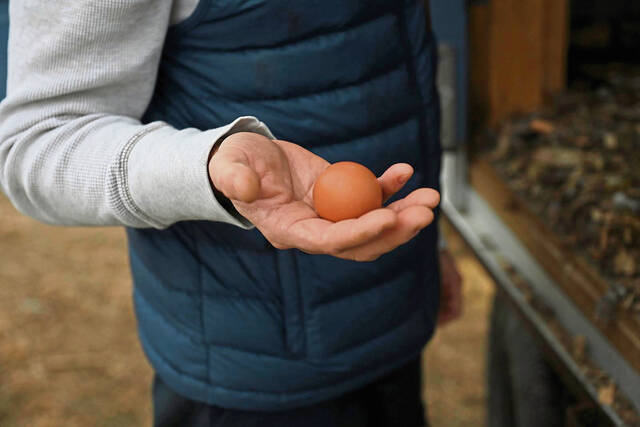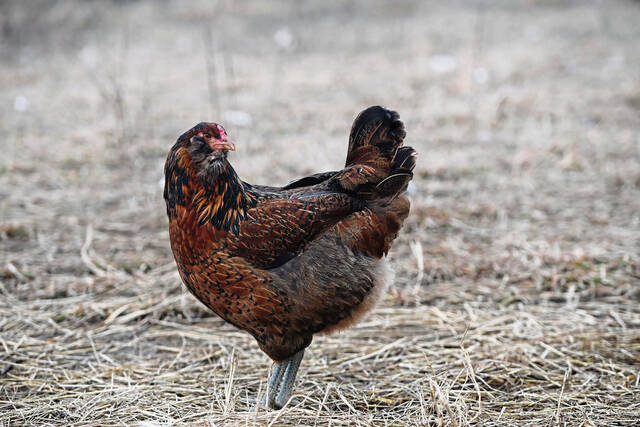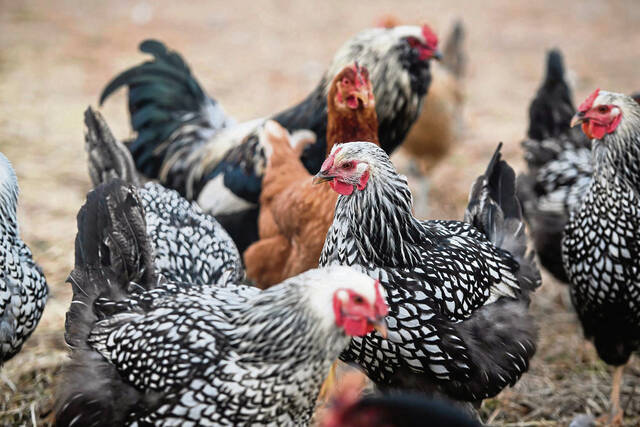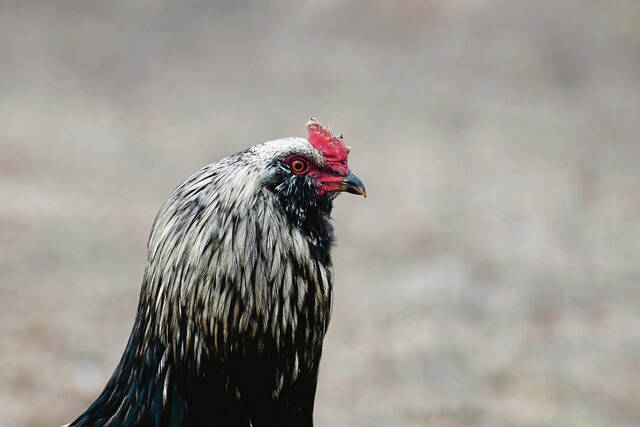Coop costs jump: Chicken feed 1 culprit behind rise in price of eggs
When Adam Mason, owner of HEAL Farms in Apollo thinks about buying his next order of chicken feed, he gets a pit in his stomach.
“I’m a little worried because we have to get feed soon, and I don’t know the feed price, but every time I’ve gotten feed, it has gone up significantly,” Mason said. “It was 48 cents a pound when we first started (in 2020,) and now it’s up to 65 cents.”
Increasing prices for chicken feed have trickled down into Mason’s operations at the farm, where he keeps 140 egg layers and around 1,800 meat birds. The rising costs have meant egg prices have gone up, too — around 20% from the beginning of the pandemic, Mason added. A dozen eggs at his farm currently costs $7.
“When the pandemic hit, everything started raising prices. The feed cost is the big killer,” he said. “For us at least, because we’re not buying in extreme bulk, about 50% of our retail price is the cost of feed.”
Mason’s farm uses organic feed and pasture-raises the chickens. Winter makes things more expensive because the chickens aren’t getting as many nutrients from the grass, he said.
“Winter is tough for us because normally, the feed is supplemental,” he said. “There’s loads of insects, so they’re nailing grasshoppers, crickets and earthworms, and there’s a lot of clover too.”
Statewide egg production is also down from last year, according to the U.S. Department of Agriculture monthly chicken and egg report. In November 2022, Pennsylvania produced 657.7 million eggs, a decrease of 9% from 2021.
Rising egg prices and rising feed prices are a topic of conversation and concern among local farmers, Mason said.
“Local farmers, we’ve talked, my farmer friends, everyone is raising prices to stay alive,” Mason said. “I apologize to customers. They get it — they say, ‘Hey, look, we want your product, the healthy meat and eggs that (you) provide,’ and they’re willing to pay for it, but I question, at what point does that price not justify?”
Sticker shock
Tom Charley, who co-owns three Shop ‘n Save stores in Westmoreland County, said eggs at his stores are now $5.99 a dozen, though he anticipates a “pretty large cost drop” next week.
“We’re at a level now that I have not seen in a long time,” he said. “The market is crazy right now. I have never seen an egg market like this before.”
At the beginning of January 2022, Charley said, his stores paid around $1.50 for a dozen eggs from their suppliers. Now, he says, a dozen eggs cost the stores around $4.50 at the beginning of December.
Avian influenza’s impact on farms has been a driver of price increases, according to his suppliers, because chickens are harder to come by, Charley added.
“The whole world has been crazy for the last three years, but this is definitely one of those categories where you walk by and are like, ‘Those are eggs I used to sell for a dollar!’ ” he said.
Not all impacted
Co-owner Andy Vlcek said buying supplies locally has helped insulate his farm, Nature’s Grove Farm in Latrobe, from the impacts of rising grain prices.
“The whole idea of our farm is we are kind of breaking free of a centralized food system and keeping things local, so when you have big impacts that you’re seeing on the industry, we don’t feel those effects as much,” Vlcek said. “We get our feed from one of the local farmers, who grows all his own grains. He still has supplements that go up a little bit, but all the grain pricing isn’t really impacted as much.”
Nature’s Grove’s eggs are $6 a dozen. The farm keeps around 1,000 birds, a mixture of egg layers and meat birds.
“Other people are catching up to our prices now,” Vlcek said. “We were the expensive ones, but now we’re the middle of the pack.”
Though his farm hasn’t been as hard hit, he has heard other local farmers expressing concern about rising grain prices, he said.
“Especially if you go using commercial feeds and everything, that’s tough,” he said. “Those costs are skyrocketing.”
Prices up across the board
At Morgan Family Farm in Herminie, Brett Morgan has found rising costs and inflation affecting both chicken egg and meat prices. He is selling eggs at $5 a dozen, compared to $4 this time last year.
“In the simple price of a meat bird, you buy a chicken nowadays, four years ago, a chicken would have cost you less than $1. That same chicken today is $5,” he said. “Then, you go from a bag of grain that would have been literally $5 to $8, now is $23 for 50 pounds of feed. Right out the gate, before that bird is 12 weeks old, you’re already $28 into it.”
Morgan also keeps cattle, pigs and sheep, and supplies for their care have crept up in price, too.
“The wrap that goes around the bale of hay is a plastic composite netting,” he said. “Two years ago, that would have been $3, now that little netting is $9.”
He’s already looking ahead to the upcoming year, and taking inflation into consideration.
“Moving forward for next year with grain prices, I don’t know if I will do pigs next year,” he said. “Even with pasture pigs, you still have to supplement a pig, and a pig to take from feeder to butcher is approximately 800 pounds of feed per pig. With those prices up anywhere between 25% and 45%, there’s a break point where someone wants to buy a pasture pig. … There’s a point where people are like, it’s just not worth it.”
Julia Maruca is a TribLive reporter covering health and the Greensburg and Hempfield areas. She joined the Trib in 2022 after working at the Butler Eagle covering southwestern Butler County. She can be reached at jmaruca@triblive.com.
Remove the ads from your TribLIVE reading experience but still support the journalists who create the content with TribLIVE Ad-Free.





